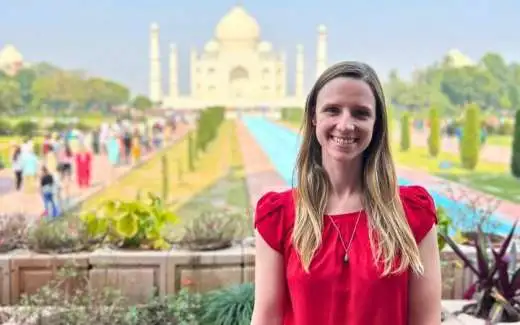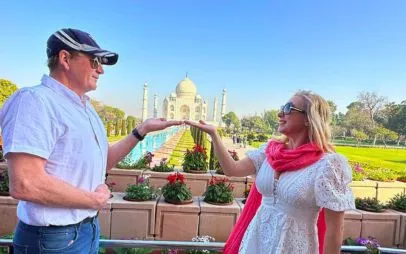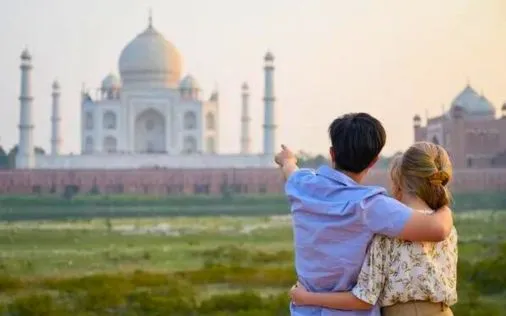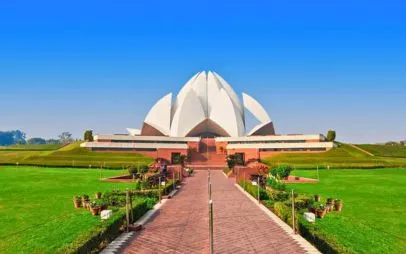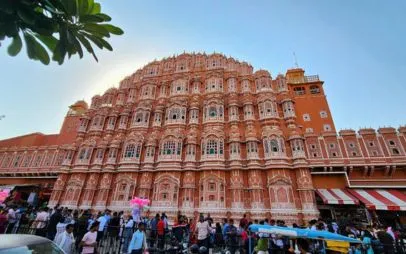If you’re in Delhi, exploring the Taj Mahal should be at the top of your list. This renowned monument represents love and is a UNESCO World Heritage site. The Taj Mahal is located in Agra, which is approximately 230 kilometers from Delhi. There are various ways to visit the Taj Mahal from Delhi, including a Taj Mahal Tour from Delhi by car, Taj Mahal Day Tour from Delhi by train, and a Sunrise Taj Mahal Tours from Delhi. If you want a more deluxe experience, there is also a Taj Mahal Luxury Tour from Delhi in luxury cars like BMW and Mercedes. These trips provide comfort and quality, adding to the whole experience of seeing the Taj Mahal.
Best Taj Mahal Tour From Delhi
The Ultimate Guide to Taj Mahal Tours from Delhi
Read all about Taj Mahal Tours & Activities
Welcome to the ultimate guide to Taj Mahal Tours from Delhi! If you’re planning a trip to India, visiting the iconic Taj Mahal is an absolute must. This magnificent white marble mausoleum, situated in Agra, is a UNESCO World Heritage site and one of the Seven Wonders of the World. In this guide, we will provide you with all the information you need to make your Taj Mahal Tour from Delhi an unforgettable experience.
The Taj Mahal UNESCO World Heritage Site
The Taj Mahal is not only a symbol of eternal love but also a UNESCO World Heritage site. Recognized for its outstanding universal value, it holds immense cultural and historical significance. Built in the 17th century by the Mughal emperor Shah Jahan, the Taj Mahal is a masterpiece of art and architecture. Its stunning design, intricate carvings, and serene surroundings make it an architectural gem that attracts millions of visitors from around the world every year.
Best time to visit the Taj Mahal
When planning your Taj Mahal Day Tour from Delhi, it’s essential to consider the best time to visit. The months of October to March are generally considered the most favorable due to the pleasant weather. The cool winter months provide a comfortable atmosphere for exploring the monument and its surroundings. However, be prepared for larger crowds during the peak season. If you prefer fewer visitors, visiting during the off-peak season from April to September can be a better option, but do keep in mind the higher temperatures and occasional rainfall.
Best Private Day Trips to the Taj Mahal from Delhi
There are numerous Day Tours from Delhi to the Taj Mahal available that cater to different preferences and budgets. Whether you’re looking for a guided tour or a customized private experience, you can find a package that suits your needs. Some popular options include:
- One day Taj Mahal Tour from Delhi by Car
- Sunrise Taj Mahal Tour from Delhi
- Taj Mahal Day Tour from Delhi by Train
- Taj Mahal Tour from Delhi by Luxury premium vehicle
- 1 Day Delhi and 1 Day Agra 2 Days Tour Package
- Taj Mahal & Agra Overnight Tour by car from Delhi
Key Attractions of the Taj Mahal Day Trips and Tours from Delhi
If you’re planning a Tours from Delhi to Taj Mahal, there are several key attractions to look forward to:
- Visiting the majestic Taj Mahal and admiring its architectural beauty.
- Exploring the Agra Fort, a UNESCO World Heritage site.
- Discovering the tomb of Itimad-ud-Daulah, also known as the “Baby Taj.”
- Exploring the vibrant markets of Agra and indulging in local delicacies.
- Learning about the rich history and culture of the Mughal Empire.
Luxury Car Options: A Premium Experience
To make your Trips to Taj Mahal From Delhi even more unique, consider choosing for a luxury vehicle service. Traveling in style and comfort can elevate your experience and provide a premium touch to your journey. Whether you prefer a chauffeur-driven sedan or a luxurious SUV, there are plenty of options to choose from.
Taj Mahal Tickets and Timings in 2024
When visiting the Taj Mahal, it’s important to know about the ticketing process and timings. The monument is open to visitors from sunrise to sunset, except on Fridays when it is closed for prayers. Tickets can be purchased online in advance or at the ticket counters located near the entrance. It’s recommended to arrive early to avoid the crowds and make the most of your time there.
Why Choose Agra Taj City Tour for Your Taj Mahal Tour Visit?
When planning your Taj Mahal tour, it’s essential to choose a reliable and reputable tour operator. Here are a few reasons why you ought to choose us:
- Experienced guides who provide in-depth knowledge about the Taj Mahal and its history.
- Tour packages are customizable to meet your specific interests and needs.
- Comfortable transportation options for a hassle-free journey.
- Excellent customer service to answer all of your questions and concerns.
- Affordable pricing without compromising on quality.
We Turn Ordinary Trips Into Extraordinary Trips!
Agra Taj City Tour specializes in turning ordinary trips into extraordinary ones. With our attention to detail and personalized service, we ensure that your Delhi to Taj Mahal tour is a memorable one. From the moment you contact us to the end of your tour, we strive to exceed your expectations and create unforgettable experiences.
How can I plan a Taj Mahal trip from Delhi?
Planning a Taj Mahal tour from Delhi by car is relatively simple with the right guidance. Below is a step-by-step guide that will help you.
- Research and choose a reputable tour operator.
- Select the type of tour and activities you’re interested in.
- Decide on the duration of your tour.
- Reserve your tour in advance and confirm your details.
- Make necessary travel arrangements to reach Delhi.
- Prepare your itinerary, including other attractions you may want to visit in Delhi or Agra.
- Pack appropriately for the weather and ensure you have all the essentials.
- Double-check your travel documents to ensure they are valid.
- Arrive in Delhi and get ready for an incredible Taj Mahal experience.
Agra’s Vibrant Culture and Food on Taj Mahal Tour
Agra is not just about the Taj Mahal; the city has a vibrant culture and delectable food to offer. During your Taj Mahal tour, take some time to explore Agra’s rich cultural heritage. Indulge in the flavors of the famous Mughlai cuisine and sample delicious street food. Don’t miss out on the opportunity to witness Agra’s traditional arts and crafts, including marble inlay work and intricate embroidery.
Ready For The World-Famous Your Taj Mahal Adventure!
Are you ready for the experience of a lifetime? Embark on a Taj Mahal adventure and witness the grandeur of this architectural masterpiece. Prepare to be mesmerized by the beauty and history that surrounds the Taj Mahal. From intricate details to captivating stories, every part of the monument has something special to offer.
Tip for Your Delhi to Taj Mahal Tour
Here are some recommendations for a seamless and enjoyable Taj Mahal tour:
- You’ll be walking a good bit, so make sure your shoes are comfy.
- Take a hat, sunglasses, and sunscreen to protect your skin from the sun.
- Be aware of local customs and wear modest clothing.
- Stay hydrated and carry a water bottle.
- Keep your valuables secure and beware of pickpockets.
- Take your time to soak in the beauty of the Taj Mahal and capture memorable photographs.
We hope this ultimate guide to Taj Mahal tours has provided you with valuable information for planning your trip. The Taj Mahal is a remarkable destination that will leave you in awe of its magnificence. Immerse yourself in the rich history and enchanting beauty of this iconic monument. Get ready to create lifelong memories!
Our Best Services
Why Choose Us?
Golden Triangle Tour Packages
Explore Delhi, Agra & Jaipur




